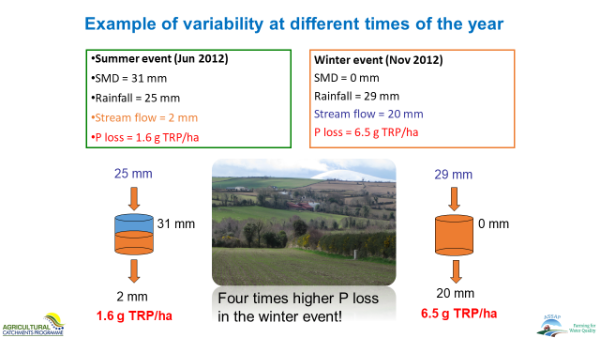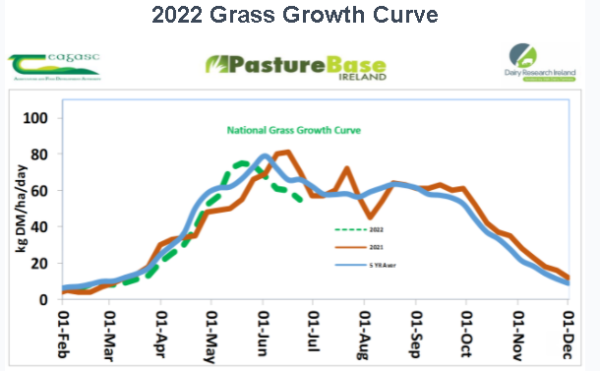24 February 2023
What is the purpose of the Nitrates Action Programme measures?

Edward Burgess, Teagasc Agricultural Catchments Programme, tells us all about the Nitrates Action Programme measures.
What is the purpose of Nitrates Action Programme measures?
The Nitrates Action Programme (NAP) and its derogation is arguably the most significant piece of legislation regulating farm practice in Ireland. Understandably the objective and reasoning behind these regulations is often lost in the associated bureaucracy. Three of the requirements under the Nitrates Action Programme are outlined here to explain how they should improve water quality.
Slurry, soiled water storage and closed periods for spreading
Nitrogen (N) and phosphorous (P) are the nutrients that have most impact on water quality, and soil moisture conditions have a big influence on the amount entering ground water, streams and rivers. While we may have dry periods during the winter months and wet summers in Ireland, we always have longer days sunshine, warmer soils and more growth from the spring until autumn. Soils usually dry out during this time due to evapotranspiration, where growing crops suck moisture from the soil and release it to the air. Half a metre of water leaves the soil every year this way, and daily amounts range from none during the winter months to 4 or 5 mm per day in June and July. When evapotranspiration exceeds rainfall, soils dry out and water tables get deeper – resulting in a soil moisture deficit. Studies by Teagasc’s Agricultural Catchments Programme have shown that the closed period coincides with the time of year when there is no soil moisture deficit. While soils are typically saturated during this period, which lasts for one quarter of the year, approximately half the total annual nitrogen and phosphorous entering our rivers does so during this time.
In addition, slurry is also a good source of nitrogen. The closed period occurs when there is little or no growth and any additional nitrogen applied to the soil at this time is unlikely to be taken up by crops. Nitrate dissolves easily in water and any surplus N not taken up by a growing plant is available for loss to water moving down through the soil, where it will end up in groundwater eventually flowing from springs to streams and rivers.

Grass measuring and budgeting
Derogation farmers are required to take at least 20 grass measurements throughout the growing season. Those that have done this for a few years understand the massive variation that can take place in growth rates from week to week. Grass is very efficient at utilising nitrogen and can have a very high response in growth rates following its application. This response is maximised through a tailored approach to fertiliser N application, matching it to growing conditions and grass requirements. It is only surplus N not used by a growing crop that is available for loss to water. Grass growth rates are influenced by drought, cold and excessive rainfall and additional applications of chemical N will not solve any of these. The use of PastureBase Ireland will advise on appropriate timing and rate of N application, maximising response, matching growth to demand and minimising surplus N in soil which is available for loss.

Ploughing dates for grassland
Under the derogation, if ploughing grassland, it must be done between the 1st of March and the 31st of May. All soils naturally contain a lot of nitrogen, and grassland soils have two to three times more than tillage. A grazing field can have 12-15t of nitrogen in every hectare. Most of this nitrogen is quite stable, in the form of organic matter. Ploughing will increase the release of easily-dissolvable nitrate from this organic matter and, as there is no established growing crop/roots in a field that has been ploughed for a number of weeks, this nitrate could be lost to water moving down through the soil following heavy rain. The highest concentrations of nitrate in groundwater measured by Teagasc’s Agricultural Catchments Programme always followed the ploughing of long-term grassland. The amount of growth before the winter, following an autumn reseed, is a lot less than that of a field reseeded in April or May. The extra growth from earlier-sown reseeds will take up a lot more of the naturally occurring nitrate from mineralised organic matter following ploughing, thereby reducing the amount available for loss to groundwater.
